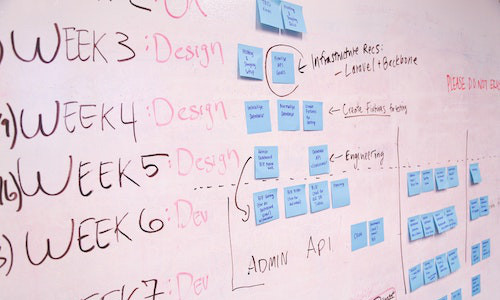
From idea to product
You have a clear idea in your head. You have read all articles about identifying your market and defined your mission, your purpose, and main objectives. But how do you turn this into a product? Great ideas are important but execution is everything.
Define your product
You don’t need expensive test setups to start collecting feedback.
Find your UI/UX
Draw your UI on paper. Yes, with a pen.
Create as many versions as you can, exhaust your options. Find all the ways to solve the problem.
Don’t put much effort into making it beautiful. We use paper because it’s easier to throw it away. When you spend time doing something, you get attached to it.
Keep iterating until you’re happy with what you have.
Bring it to life
Take some pictures and create a clickable version. You can use advanced tools like InVision but a simple PowerPoint would work.
Now you have something to show when you talk to people about your idea.
Because you drew on paper, it’s easy to change it on the go. When you have a new idea, you can sketch it, take a picture and edit your design.
Use existing tools
You can go surprisingly far without writing any code.
Everyone has an email address
Building an app with a user authentication system is time-consuming. There are 3rd parties to help you but you will have to integrate them into your product. Can you build a user base with emails?
Forms are easy
Start collecting information using Google Form or Typeform and email it to you. You can then email back the user with the results. This is an inexpensive way to define what your app would do.
Spreadsheets are powerful
Actually, they are so powerful that many 6–7 figures companies rely on well-crafted spreadsheets to operate. While they will eventually be replaced by software solutions, it proves that it is possible to go a long way with them. It is worth spending time to learn how to use them.
Automation
As the complexity of your workflow increases, you can reduce chores and mistake by automating things with tools like Zapier. You can also get a virtual personal assistant.
Build an MVP
Be careful not to over-engineer your app. Always keep in mind each feature will cost time and money. Consider the opportunity cost and maintenance overhead.
Reduce complexity
It’s always hard to make the difference between accidental complexity and essential complexity. But there are common ways to improve communication and sustain development speed.
If you intend to have end users, we recommend you to always write tests and set up a continuous integration.
Scale carefully
Building a scalable app requires a gigantic amount of work, expensive resources and complex skills. It involves teams of engineers specialised in their respective domain.
If you want to work with us, drop us an email!